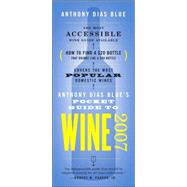
| Preface | |
| Introduction | |
| How to Use This Book | |
| Basics | |
| Getting To Know Your Grapes | |
| How To Taste Wine | |
| Pairing Wine With Food: The Rules and How To Break Them | |
| A Word About Vintage | |
| Listings | |
| The New World | |
| The Americas | |
| The United States | |
| California | |
| Pacific Northwest | |
| New York State Wineries | |
| Other United States Wineries | |
| Canada | |
| Latin America | |
| Chile | |
| Argentina | |
| Mexico | |
| Uruguay | |
| Australia, New Zealand, South Africa | |
| Australia | |
| New Zealand | |
| South Africa | |
| The Old World | |
| Europe | |
| France | |
| Italy | |
| Spain | |
| Portugal | |
| Germany | |
| Austria | |
| Switzerland | |
| Hungary and Slovenia | |
| Greece | |
| Israel and Lebanon | |
| Newcomers | |
| China | |
| India | |
| Appendices | |
| Glossary of Wine Terms | |
| Vintage Chart | |
| Table of Contents provided by Publisher. All Rights Reserved. |
The New copy of this book will include any supplemental materials advertised. Please check the title of the book to determine if it should include any access cards, study guides, lab manuals, CDs, etc.
The Used, Rental and eBook copies of this book are not guaranteed to include any supplemental materials. Typically, only the book itself is included. This is true even if the title states it includes any access cards, study guides, lab manuals, CDs, etc.